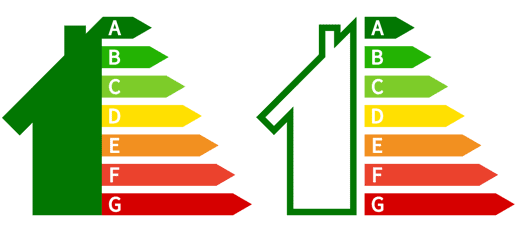What can we expect from the future of SAP.

By 2050 net zero buildings will be defined using the tools of the time, not the tools of today. Meaning staying informed with the developments of tools like SAP, thought to be instrumental in domestic decarbonisation, is essential for anyone who’s involved with housing.
The Standard Assessment Procedure, or, as it is more commonly known, SAP, is the methodology mandated by the government to calculate the energy performance of new dwellings and ensure they meet Part L Building Regulations. Not to be confused with RdSAP (Reduced data SAP), which is the corresponding methodology used for existing dwellings and which, as implied by the name, uses fewer data points. Both methodologies are also used to create Energy Performance Certificates for homes.
With SAP version 10.2 only recently becoming enshrined in Part L of Building Regulations, and RdSAP version 10.2 yet to be released, SAP 11 may seem like a long cry away. However, thanks to a government-commissioned landscape review there are early signs as to what changes we might expect.
SAP has undergone many different iterations since its creation in 1993. This means that keeping up to date with its changing forms does pose a challenge, especially after the numbering system changed from a version number (‘SAP 9.53’) to the year of production (‘SAP 2012’) and back to the version (‘SAP 10.2’).
SAP is owned by BEIS and its development is currently contracted out to BRE, who develop the methodology in collaboration with SAPIF (the SAP Industry Forum) and SAPSIG (the SAP Scientific Integrity Group). SAPSIG ensures the development of SAP remains impartial and that specific commercial and political considerations don’t wrongly influence decisions. Essentially, this means that SAP maintains the highest possible degree of methodological accuracy.
As time passes SAP must be updated to account for developments in technologies and innovation in testing systems, as well as changes to houses and energy systems. It is important SAP is regularly updated to maintain optimal accuracy, as effective assessment of energy performance is central to reaching net zero.
Published in June 2021, the SAP 11 landscape review was carried out by a consortium led by Etude. The review consisted of a deep analysis of what works well and what doesn’t in SAP/RdSAP. Following this, a literature review, advice from experts and analysis of other modelling methodologies from around the world were used to inform solutions to the extant problems. At the end of this process the group came up with 25 recommendations that should be considered in SAP 11’s development.
A central finding of the deep analysis was that SAP is currently not fully aligned with the government’s net zero objectives. The review found an array of issues within SAP 10.2 hindering the execution of these goals. Significant issues included using just energy cost as the main metric in EPC ratings, instead of also including energy efficiency and carbon metrics, as in the current market this can favour fossil fuel use. The use of short-term carbon factors to calculate carbon emissions can also mislead when it comes to Part L compliance and peak demand reduction.
To ensure a more cohesive and goal focussed development of SAP, the review devised a hierarchy of functions for SAP 11. Of the highest-ranking priority were encouraging decisions for net zero buildings and retrofitting of existing homes, evaluating carbon emissions on a 20–30-year average, improving the purpose of Building Regulations and producing EPCs to better align with other priorities.
The consortium finalised 25 recommendations to solve the identified problems. These recommendations were split into five categories: alignment between SAP/RdSAP and its strategic objectives, improvements to the methodology, improvements to SAP/RdSAP and its ecosystem for net zero, a better evaluation of energy use, support to decarbonisation of heat and electricity. The landscape review and a full list of its recommendations can be found on the website.
Following the review, the government has appointed a BRE led consortium to start developing and testing SAP/RdSAP 11, with the previously mentioned recommendations in mind. While confirming the three-year project on their website, the BRE announced SAP 11 will be more tailored to decarbonising technologies like heat pumps, renewables and other smart technologies. Once this stage is completed the government have clarified plans to consult with industry, via the SAPIF.
In terms of when we can expect to see SAP 11, we are still a long way off its completion, as it must undergo various development stages in conjunction with multiple bodies. It is important to remember that the updated version of SAP is not binding until it is enshrined in Part L of the Building Regulations. Current estimations place the completion of SAP 11 for around late 2024, with the government claiming it will come into force by 2025 with the Future Homes Standard update to Building Regulations.
In the meantime, the eyes of the housing world will look towards RdSAP 10.2, the specification of which we are expecting to be finalised shortly.
Click here to view our upcoming technical webinars, which includes ‘The Future of SAP’. Join us for free by visiting the technical webinar page.